June 5, 2014
Shade, insects, drought: what’s buggin’ you?
Like us, rain lilies jumped for joy with the recent deluge. When my Habranthus robustus seeds dry, I’ll spread them around. In the meantime, I’ll swat eager beaver mosquitoes.
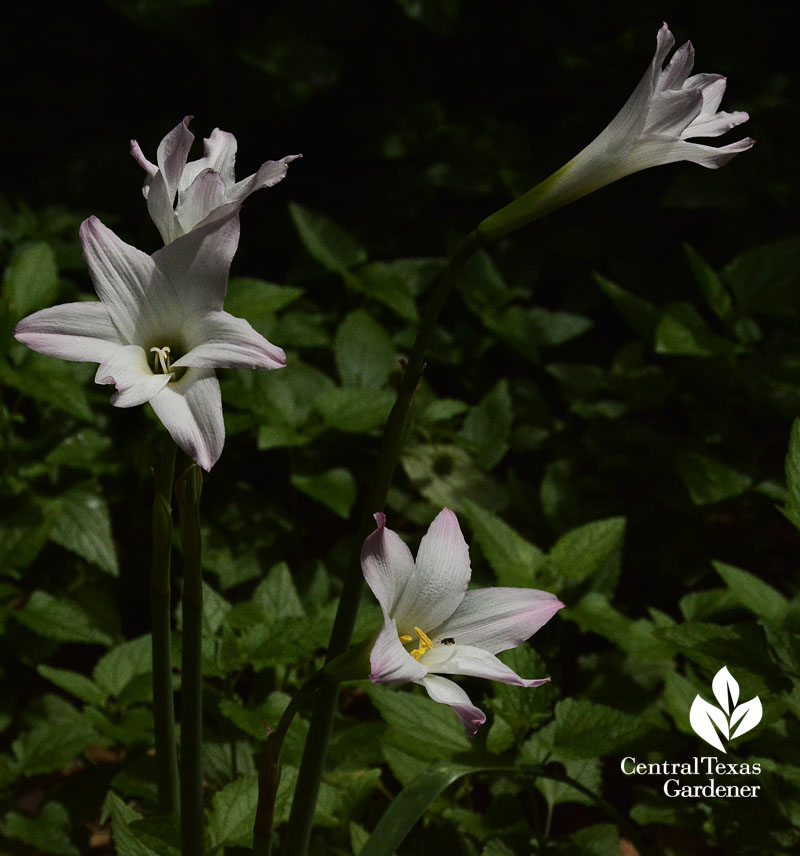
I’m thrilled that Michelle Pfluger from Green ‘n Growing in Pflugerville introduced us to native snake herb (Dyschoriste linearis) on CTG with her list of great groundcovers for shade.
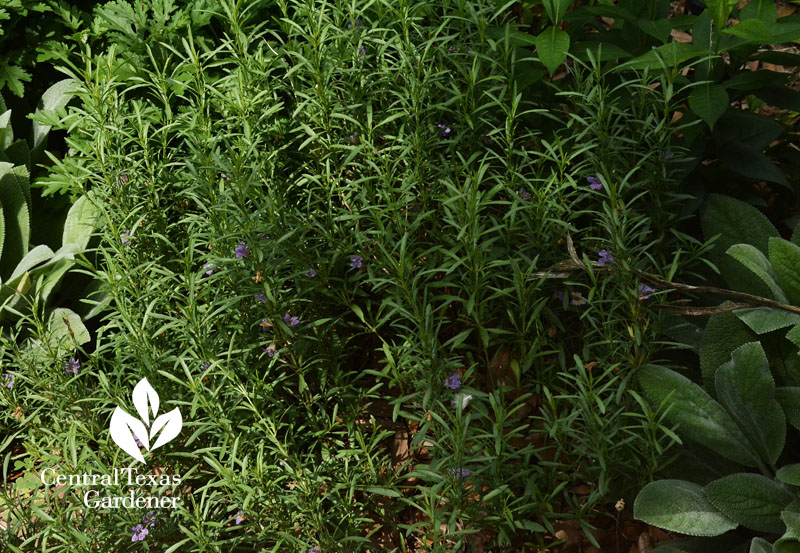
I moved faster than a garden snake (or deer) to get some. Now in their second spring, they’ve taken off, after a brief underground winter excursion. They contribute to my textural dimension in shade with sun at different times of the day.
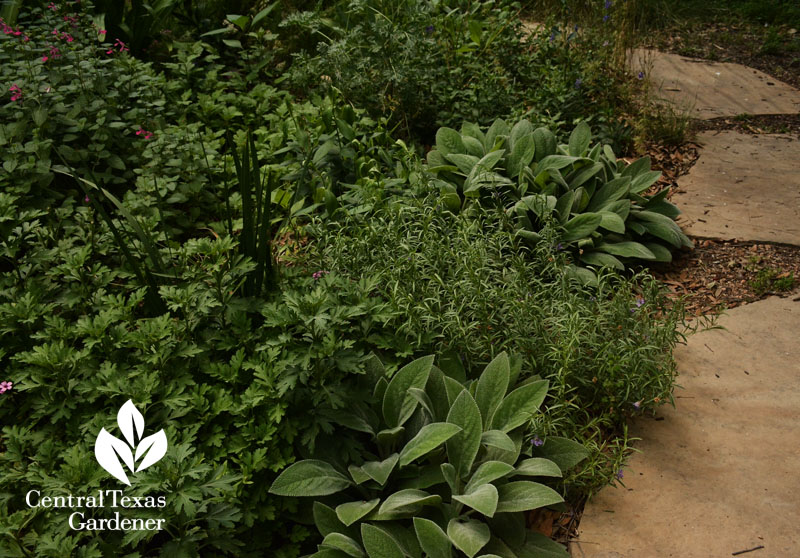
The almost secretive flowers attract butterflies, not snakes.
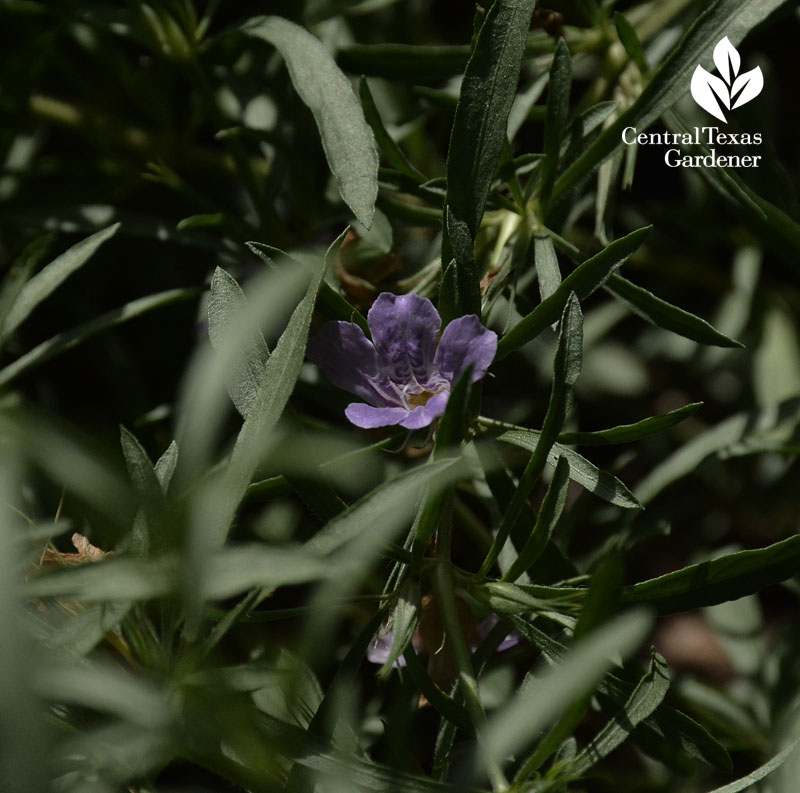
Though honestly, if you don’t have garden snakes, earthworms, insects and birds, then something is really wrong! Into our cycle of healthy garden life, a few chompers or suckers must fall. It kills me that people wipe out everything and then wonder what happened to the bees, ladybugs, fireflies, birds, and butterflies. Or the squash and other crops that fail from lack of pollination.
Wizzie Brown, Travis County IPM Program Specialist, Texas A&M AgriLife Extension Service, joins Tom to sort out what’s bugging us and how to adopt the Integrated Pest Management approach.
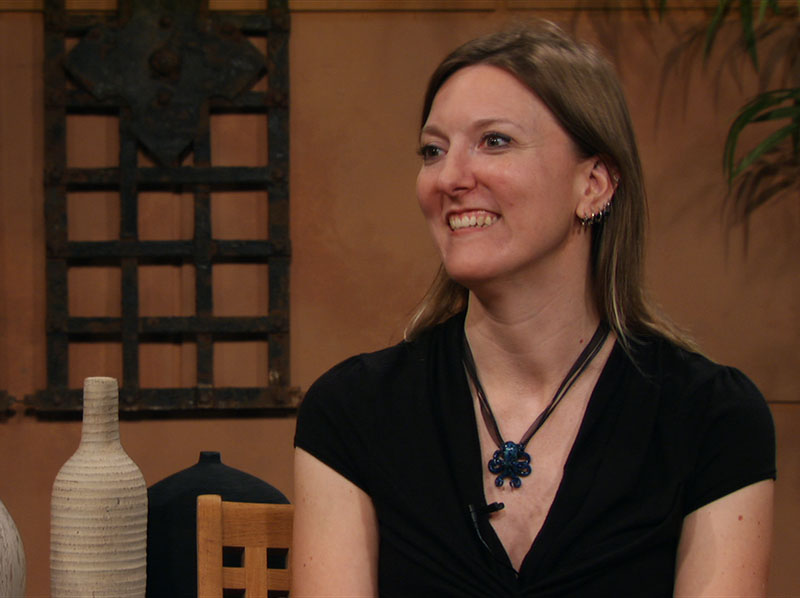
IPM means accepting that circle of life with pests and their natural predators, like ladybug and green lacewing larvae that scarf up aphids, among others.
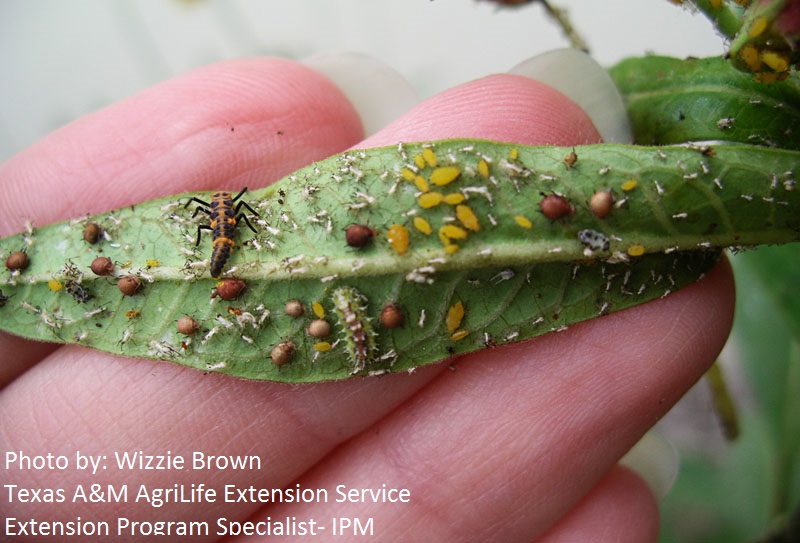
If we must control intense populations, select the least toxic/invasive approach. It depends on the insect: whether it chews or sucks/pierces.
Wizzie’s safest control is a blast of water on jet spray. For some, like various true bugs—including those dratted tomato stink bugs—scoop them up in early morning or suck up those suckers in a vacuum device.
Her top advice: nab them while they are little, like in their nymph stage. Once they’re big and flying, good luck!
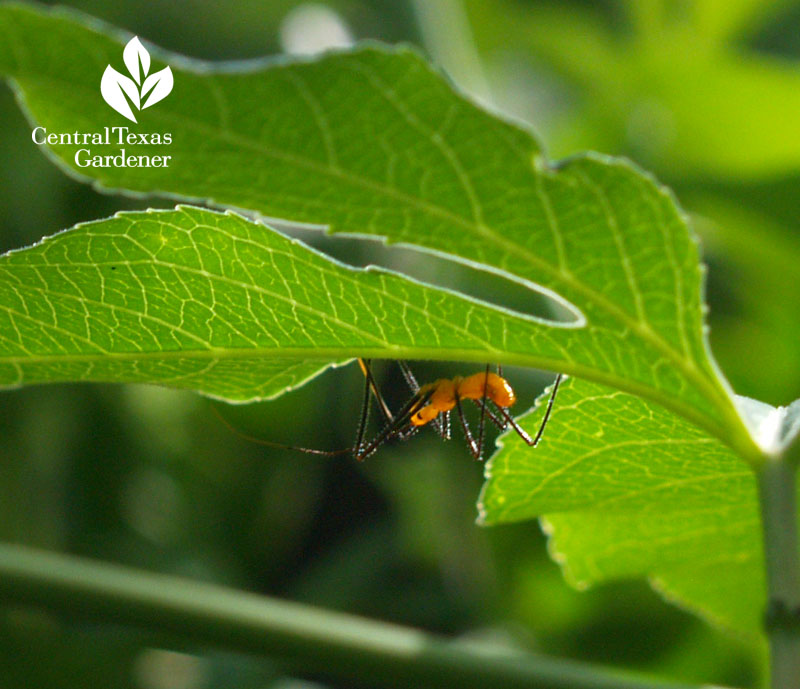
She tells us when and how to use direct kills, like insecticidal soap for piercing insects. Use products like spinosad or Bt for chewing pests.
BIG CAUTION: natural product spinosad is fatal to bees. If you spray it on your plants to kill chomping insects, do it at night so that it dries before the bees come to pollinate the next morning. Granular Spinosad, used for fire ants, won’t harm bees since it’s on the ground.
If you can’t figure out what’s going on, head out after dark with a flashlight to find your culprit. That’s what KLRU producer Eve Tarlo did to catch this one in the act on her fig tree: a June bug!
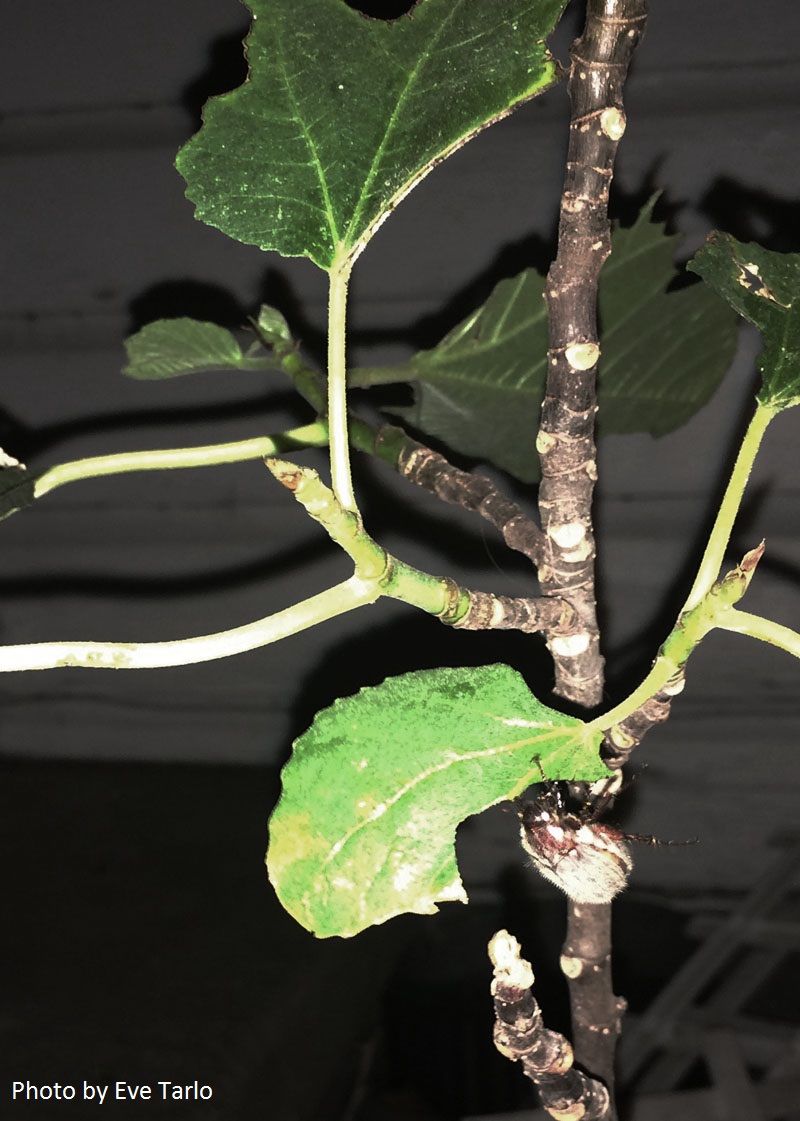
Normally, it’s the larvae of June bugs (actually a beetle) that cause our woes if we’re out of balance with too many grubs. The adults just fly around, mate, and lay their eggs, which they’ll be doing soon. Count on innovative Eve to have creative insects, too!
Follow Wizzie on her blog to keep up with the latest pestilential news, webinars and workshops
If you spot this around the garden, jump for joy! Gardener extraordinaire Vicki Blachman’s husband Steven captured the delicate eggs of green lacewings.
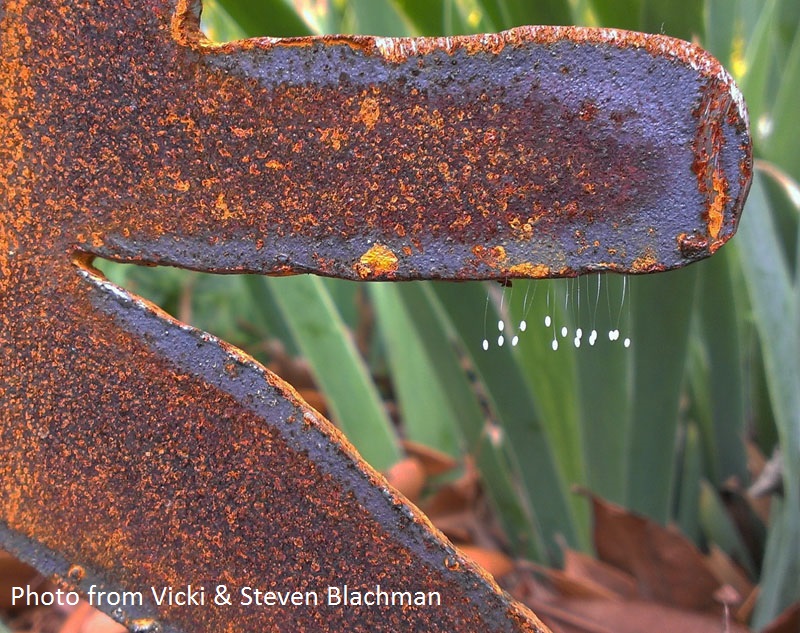
When they hatch, the larvae will clean up aphids or other small insects that dare to pester Vicki. The lacy adults hover near night lights after dining on pollen and nectar.
Peggy Moore doesn’t have insects on her loropetalum, but she sure wants to know how to prune it.
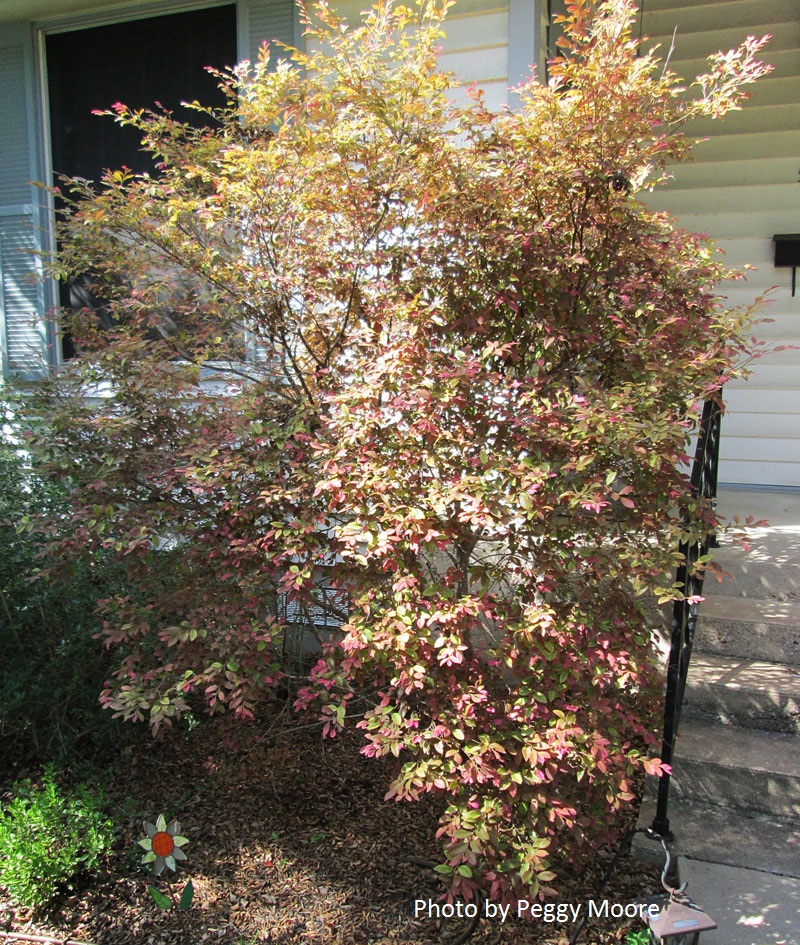
We’ve all been there: something that goes nuts before we have time to deal with it. Daphne explains why Peggy should only cut back 2’ for now on her 6’ plants: the 1/3 rule. She also advises against hedging, but simply shaping as Peggy reduces the height. Rejuvenating an overgrown shrub can take a few seasons.
If you want a border plant that doesn’t require much pruning, check out Daphne’s Pick, Green germander (Teucrium chamaedrys), a member of the mint family.
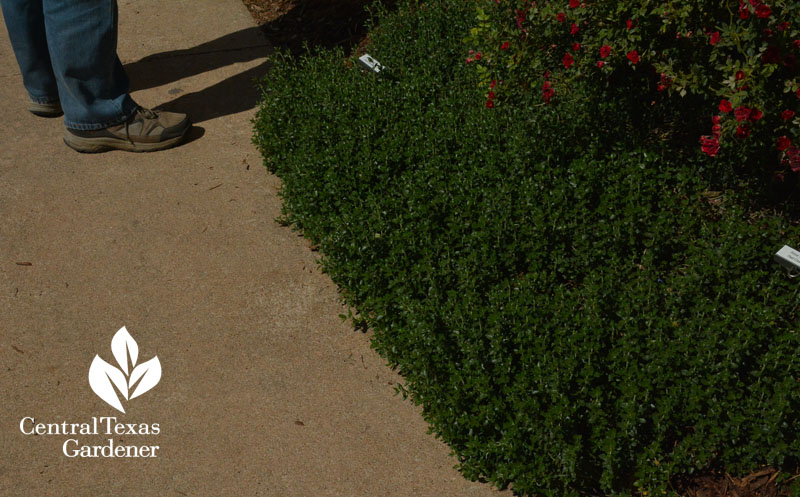
To keep it dense, Daphne recommends shearing lightly in early spring and again after its lavender flowers fade in early summer. Mainly, enjoy this cold-hardy and drought tough evergreen for its deep glossy leaves in full sun to some shade.

Since 1989, Tim Miller from Millberg Farm in Kyle has farmed organically with intense water conservation methods. He jumps into his first Backyard Basics to give you some of his tricks.
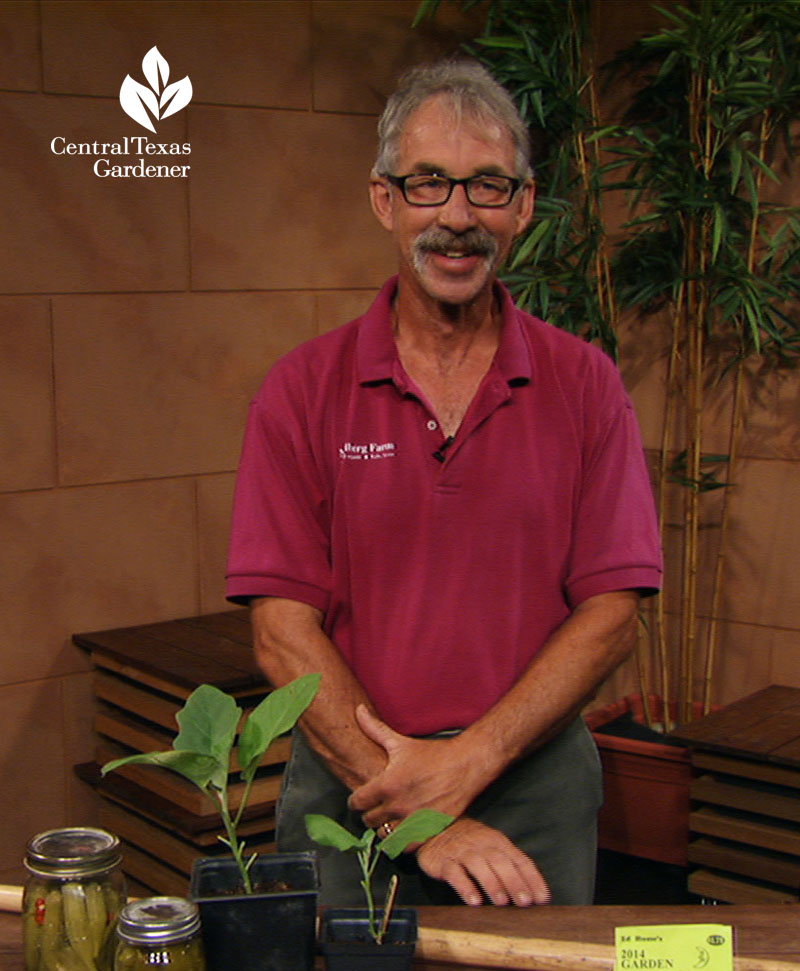
On tour, landscape architect Christy Ten Eyck is passionate about conserving water without sacrificing wildlife and soulful beauty.
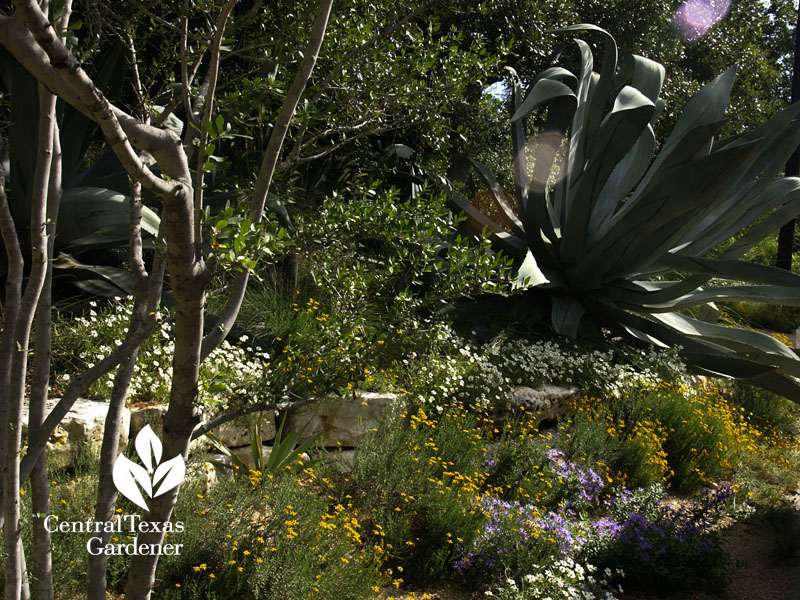
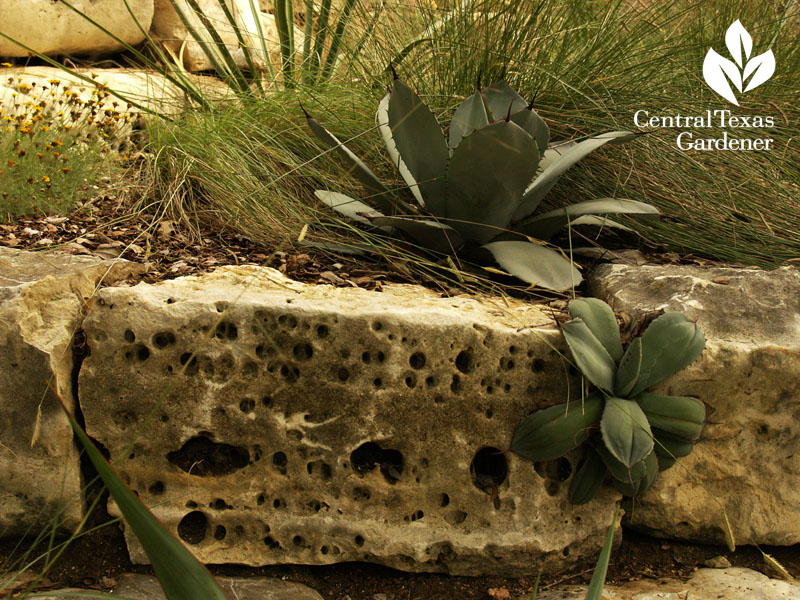

After years in Tucson, she expanded her office to Austin, working with clients across several states. When she and husband Gary Deaver bought a house in Austin, she renovated the elderly yard’s footprint. She dumped the sloping lawn and built terraces and drains to harness and retain water.


Sustainable, non-clumping pecan mulch is her favorite topping to hold in moisture.
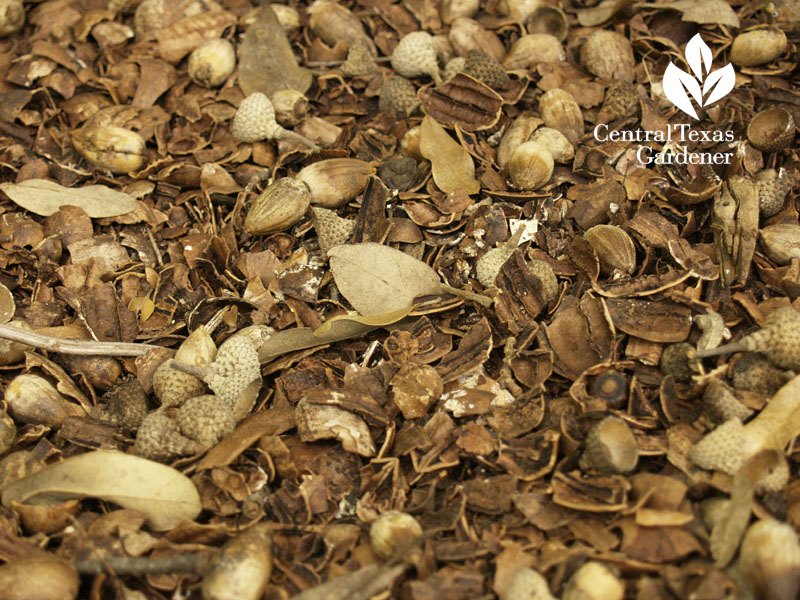
Since her return, the wildlife have returned to this once sterile yard.
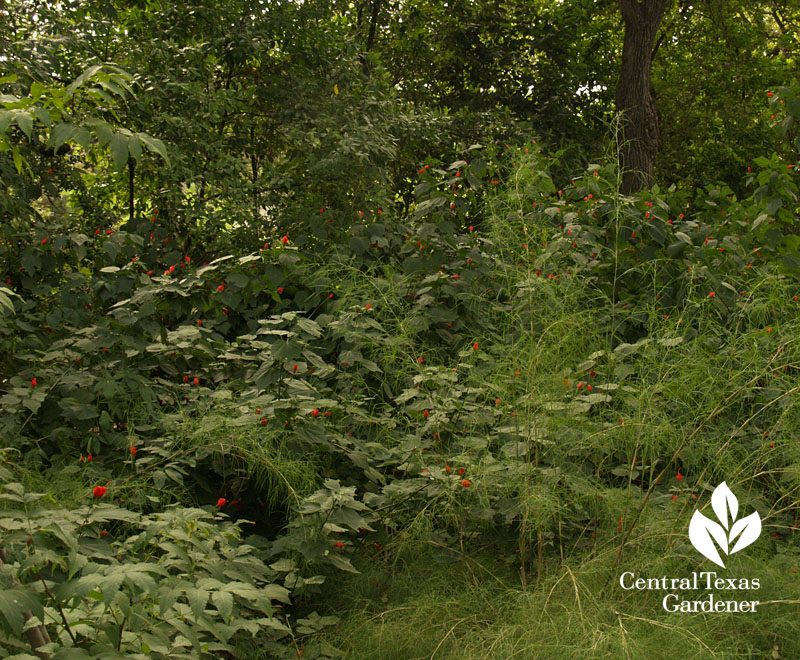
Watch her wise and beautiful story right now!
Thanks for stopping by! Next week, meet Amy Stewart, The Drunken Botanist, and take a tour of Lucinda Hutson’s vivacious garden and Tequila Cantina. Linda
tags:

